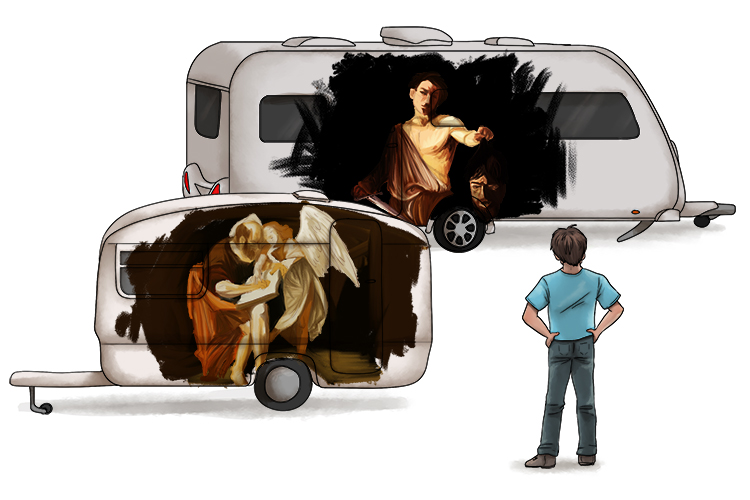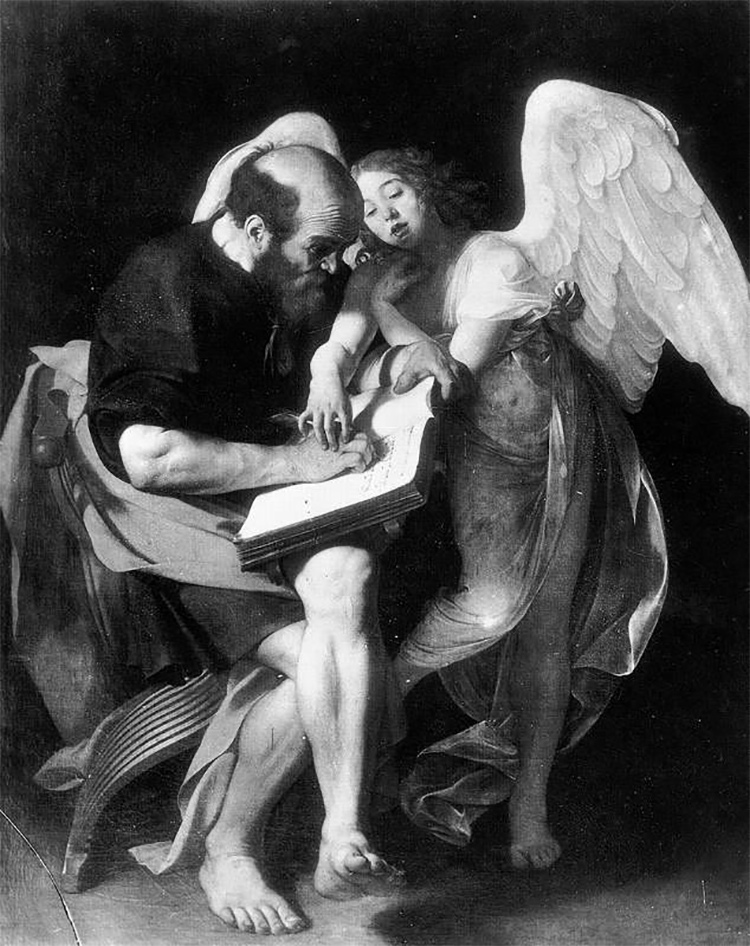Caravaggio (died 1610 aged 38) – the greatest painter who ever lived (some say), who used foreshortening, chiaroscuro and real people in his paintings
(Pronounced kar-uh-vah-joh)
Caravaggio – Caravans where people have had a go at painting religious stories
Caravans where people have had a go (Caravaggio) at painting religious stories on the sides.

Caravaggio created three things that no one else had up to this point. Most religious art, Caravaggio claimed, wouldn't connect with the common people. Churches needed to be better at marketing to attract more people.
Up to now (and, remember, this is around 1600) most art was very flat, with yellow bands glowing around heads to depict religious people. Caravaggio was the first to use a real 32-year-old man as a model for Jesus and real fishermen as the disciples. These fishermen were weathered as only fishermen could be, with wrinkled hands and faces.
Caravaggio was the first to make pictures seem to capture movement of people by foreshortening them (a visual effect that makes an object recede using the mathematics of perspective).
He was the first major painter to use chiaroscuro (pronounced kee-ahr-uh-skoo-roh), in other words using a strong light to highlight main features, which gives a contrasty, light and dark effect.

Saint Matthew and the Angel, 1602
The above painting is a very moving piece of Caravaggio's art. At nearly three metres by two metres (116in by 77in), it depicts an angel helping St Matthew, the disciple, write part of the bible.
Unfortunately, the world only has a black and white photograph of the painting as it was destroyed by fire in World War II.

The Incredulity of Saint Thomas by Caravaggio, c. 1602
Above is the disciple, Thomas, doubting that Jesus has returned from the dead, and so we have a fisherman sticking his finger into the wound of a 32-year-old Jesus.

David with the Head of Goliath, c. 1607
Here we have the full force of Caravaggio using foreshortening, light and dark (with key features highlighted) and real people being used as models. In fact, Goliath is a self-portrait. Caravaggio used the painting to beg forgiveness from the Pope for killing a man (Caravaggio had a violent temper). Caravaggio was requesting a pardon in the only way he knew, by presenting a painting and begging the Pope's forgiveness (which he received).
Nobody before had created – religious paintings in which foreshortening, chiaroscuro and real people were used so effectively




